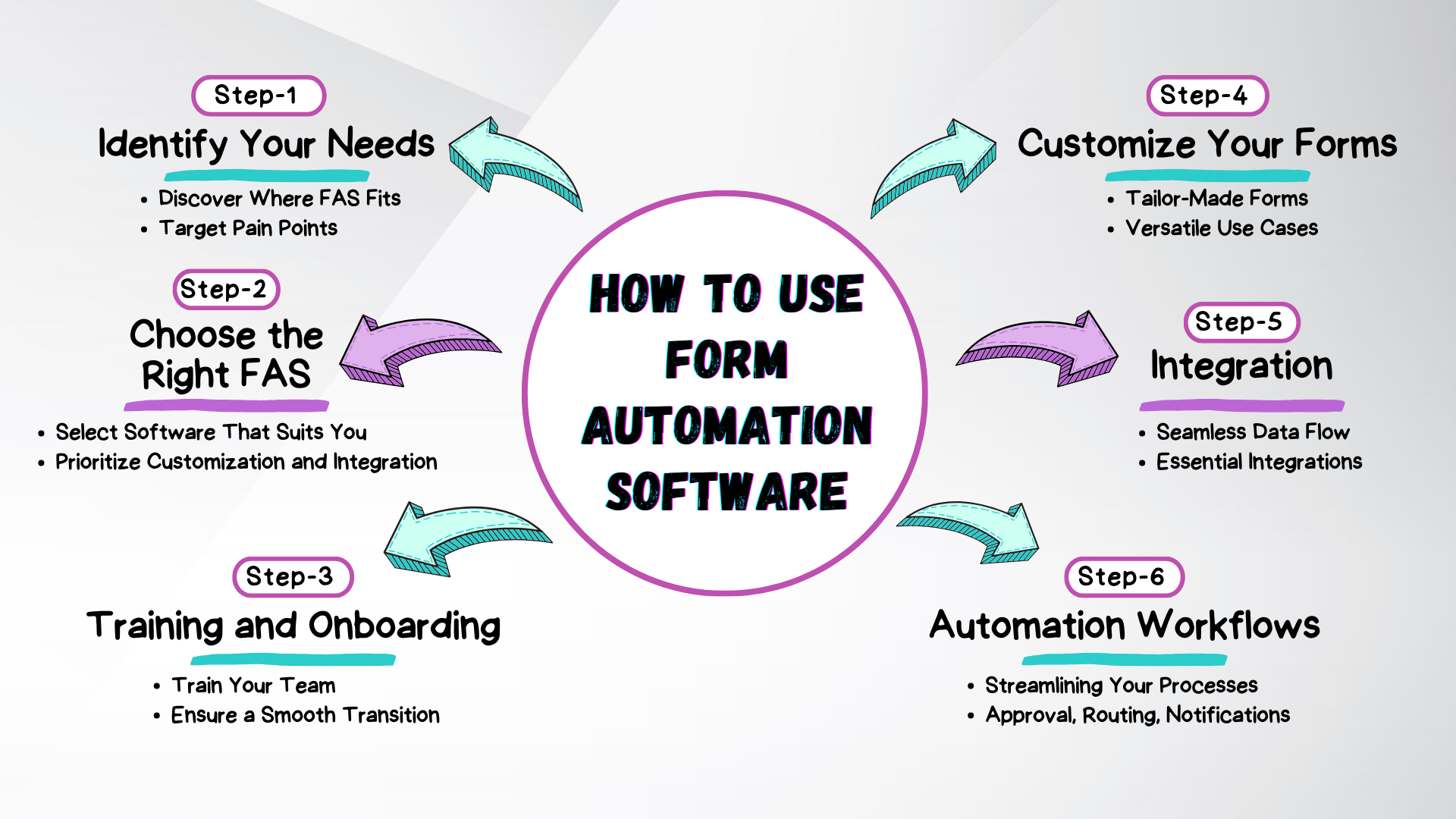
Ever wondered if there’s a magical tool that can revolutionize your business operations, making them faster and more efficient? We have the answer: Form Automation Software. Staying competitive means finding innovative ways to streamline operations and enhance productivity. One such innovation that has been making waves is Form Automation Software. In this article, we will delve into what Form Automation Software is, how to harness its power to revolutionize your business processes, and how it fits into the realm of low-code and no-code technology.
The Rise of Form Automation
Understanding Form Automation Software
Form Automation Software, often referred to as FAS, is a powerful tool designed to automate the process of data entry, document creation, and workflow management. It enables businesses to replace manual, time-consuming tasks with seamless, automated processes. With FAS, you can design, fill out, and process forms with just a few clicks, eliminating the need for manual data entry and reducing the risk of errors.
FAS has a range of features that make it a must-have for businesses of all sizes. These features include:
- Custom Form Creation: Design forms that are tailor-made for your specific needs.
- Integration Capabilities: Seamlessly integrate FAS with other software and systems.
- Data Validation: Ensure data accuracy with built-in validation checks.
- Workflow Automation: Streamline complex business processes with automated workflows.
- Reporting and Analytics: Gain valuable insights into your data with robust reporting features.
Also Read: Top Forms Automation Tools for you
Benefits of Using Form Automation Software
Now, let’s explore why Form Automation Software is a game changer for businesses, especially when considering its role in the low-code and no-code technology landscape.
1. Time Savings
Manual data entry can be a time-consuming and error-prone task. FAS eliminates this need, allowing your employees to focus on more critical aspects of their job. This saves time and reduces the risk of data entry errors. In the context of low-code and no-code technology, FAS can be integrated seamlessly with other systems, creating streamlined processes without extensive coding.
2. Error Reduction
Human errors can be costly for businesses. With Form Automation Software, data validation rules ensure that the information entered is accurate and complete. This reduces errors, leading to better decision-making and improved compliance. In the low-code and no-code landscape, FAS bridges technical and non-technical users, ensuring that even those with limited coding skills can create and manage complex forms and processes.
3. Increased Productivity
Automating repetitive tasks means your employees can be more productive. They can dedicate their time to tasks that require human intelligence, creativity, and problem-solving, ultimately boosting productivity. Low-code and no-code platforms, when combined with FAS, enable business users to create and modify automated workflows, further enhancing productivity without extensive coding.
4. Enhanced Collaboration
FAS allows for seamless collaboration by enabling employees to work on forms simultaneously. This fosters teamwork and ensures that everyone is on the same page. In the low-code and no-code context, collaboration is made even more accessible as business users can design and modify forms and workflows, promoting cross-functional collaboration.

Also read: Tips for Successful Form Automation Implementation
How to Use Form Automation Software

Implementing Form Automation in Your Business
Implementing Form Automation Software in your business, particularly when combined with low-code and no-code technology, can be a game-changing move. Here’s how to get started:
1. Identify Your Needs
Begin by identifying the areas in your business where FAS can make the most significant impact. Whether it’s in data collection, HR processes, or customer onboarding, pinpoint the pain points where automation can help.
2. Choose the Right FAS
There are various Form Automation Software options available in the market. Select one that aligns with your business requirements and budget. Look for features like customization, integration, and ease of use. Ensure it can seamlessly integrate with your choice of low-code or no-code platform.
3. Training and Onboarding
Once you’ve chosen an FAS, it’s crucial to train your employees on its usage. Familiarize them with the software and its features to ensure a smooth transition. In the context of low-code and no-code, provide training that empowers users to create and modify forms and workflows.
4. Customize Your Forms
Design and customize forms that are tailored to your specific needs. This may include creating forms using survey software for employee onboarding, customer surveys, or financial reporting. With the integration of low-code and no-code elements, customization becomes accessible to a wider range of employees.
5. Integration
Integrate your chosen FAS with other essential tools and software your business uses. This ensures a seamless flow of data between systems and in the low-code and no-code context, enables cross-platform integration without extensive coding.
6. Automation Workflows
Set up automated workflows to streamline your business processes. Whether it’s approvals, document routing, or notifications, automation simplifies these tasks. In low-code and no-code environments, this can be achieved by business users themselves, reducing the reliance on IT departments.
Also Read: Tips to consider while choosing a Form Automation Software
Conclusion
Form Automation Software, especially when combined with low-code and no-code technology, is not just a trend; it’s necessary in today’s business world. Its ability to save time, reduce errors, and enhance productivity makes it a valuable asset for any organization. By implementing FAS in your business and following these steps, you can stay ahead of the competition and leave manual processes in the past.
So, why wait? Embrace Form Automation Software today, leverage low-code and no-code capabilities, and watch your business efficiency soar to new heights.
Frequently Asked Questions(FAQs)
Q. What is Form Automation Software?
Form Automation Software is a digital tool that streamlines and digitizes the process of creating, distributing, and collecting data from forms and documents. It replaces manual data entry with automated data capture and processing.
Q. Why should I use Form Automation Software?
Form Automation Software increases efficiency by reducing manual data entry errors and saving time. It also provides a centralized database for easy access to form data, enhancing organization and decision-making.
Q. How do I create forms with Form Automation Software?
To create forms, you typically use a user-friendly no-code interface to design your form by adding fields like text boxes, checkboxes, and drop-down menus. You can customize the form’s layout and design to match your needs with no-code platforms like Quixy with ease.
Q. How does Form Automation Software collect data?
Form Automation Software can collect data in various ways, such as through online forms, mobile apps, or by scanning physical documents. Once data is entered, the software stores and processes it automatically.
Q. What are some common use cases of Form Automation Software?
Form Automation Software is used in various industries for tasks like employee onboarding, customer feedback surveys, patient intake forms in healthcare, and order processing in e-commerce. It’s versatile and can be adapted to many data collection needs.
Login
Please login to comment
0 Comments
Oldest















